Lactobacillus reuteri TSR332 and Lactobacillus fermentum TSF331 stabilize serum uric acid levels and prevent hyperuricemia in rats
- PMID: 33986988
- PMCID: PMC8101448
- DOI: 10.7717/peerj.11209
Lactobacillus reuteri TSR332 and Lactobacillus fermentum TSF331 stabilize serum uric acid levels and prevent hyperuricemia in rats
Abstract
Background: Uric acid (UA) is the end product of purine metabolism in the liver and is excreted by the kidneys. When purine metabolism is impaired, the serum UA level will be elevated (hyperuricemia) and eventually lead to gout. During evolution, humans and some primates have lost the gene encoding uricase, which is vital in UA metabolism. With the advances of human society, the prevalence of hyperuricemia has dramatically increased because of the refined food culture. Hyperuricemia can be controlled by drugs, such as allopurinol and probenecid. However, these drugs have no preventive effect and are associated with unpleasant side effects. An increasing number of probiotic strains, which are able to regulate host metabolism and prevent chronic diseases without harmful side effects, have been characterized. The identification of probiotic strains, which are able to exert beneficial effects on UA metabolism, will provide an alternative healthcare strategy for patients with hyperuricemia, especially for those who are allergic to anti-hyperuricemia drugs.
Methods: To elicit hyperuricemia, rats in the symptom control group (HP) were injected with potassium oxonate and fed a high-purine diet. Rats in the probiotic groups received the high-purine diet, oxonate injection, and supplements of probiotic strains TSR332, TSF331, or La322. Rats in the blank control group (C) received a standard diet (AIN-93G) and oxonate injection.
Results: Purine-utilizing strains of probiotics were screened using high-pressure liquid chromatography (HPLC) in vitro, and the lowering effect on serum UA levels was analyzed in hyperuricemia rats in vivo. We found that Lactobacillus reuteri strain TSR332 and Lactobacillus fermentum strain TSF331 displayed significantly strong assimilation of inosine (90%; p = 0.00003 and 59%; p = 0.00545, respectively) and guanosine (78%; p = 0.00012 and 51%; p = 0.00062, respectively) within 30 min in vitro. Further animal studies revealed that serum UA levels were significantly reduced by 60% (p = 0.00169) and 30% (p = 0.00912), respectively, in hyperuricemic rats treated with TSR332 and TSF331 for 8 days. Remarkably, TSR332 ameliorated the occurrence of hyperuricemia, and no evident side effects were observed. Overall, our study indicates that TSR332 and TSF331 are potential functional probiotic strains for controlling the development of hyperuricemia.
Keywords: Gout; Hyperuricemia; Lactobacillus; Probiotics; Purine metabolism.
©2021 Kuo et al.
Conflict of interest statement
Yi-Wei Kuo, Shih-Hung Hsieh, Jui-Fen Chen, Cheng-Ruei Liu, Ching-Wei Chen, Yu-Fen Huang, and Hsieh-Hsun Ho are employed by Glac Biotech Co., Ltd.
Figures
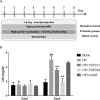
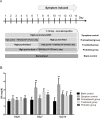
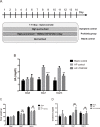
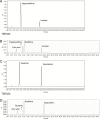
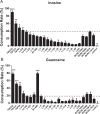
Similar articles
-
Probiotic Lactobacillus fermentum TSF331, Lactobacillus reuteri TSR332, and Lactobacillus plantarum TSP05 improved liver function and uric acid management-A pilot study.PLoS One. 2024 Jul 24;19(7):e0307181. doi: 10.1371/journal.pone.0307181. eCollection 2024. PLoS One. 2024. PMID: 39046973 Free PMC article. Clinical Trial.
-
Screening and characterization of purine nucleoside degrading lactic acid bacteria isolated from Chinese sauerkraut and evaluation of the serum uric acid lowering effect in hyperuricemic rats.PLoS One. 2014 Sep 3;9(9):e105577. doi: 10.1371/journal.pone.0105577. eCollection 2014. PLoS One. 2014. PMID: 25184445 Free PMC article.
-
Limosilactobacillus reuteri HCS02-001 Attenuates Hyperuricemia through Gut Microbiota-Dependent Regulation of Uric Acid Biosynthesis and Excretion.Microorganisms. 2024 Mar 22;12(4):637. doi: 10.3390/microorganisms12040637. Microorganisms. 2024. PMID: 38674582 Free PMC article.
-
A review on the fruit components affecting uric acid level and their underlying mechanisms.J Food Biochem. 2021 Oct;45(10):e13911. doi: 10.1111/jfbc.13911. Epub 2021 Aug 23. J Food Biochem. 2021. PMID: 34426969 Review.
-
Gut microbiota as a new target for hyperuricemia: A perspective from natural plant products.Phytomedicine. 2025 Mar;138:156402. doi: 10.1016/j.phymed.2025.156402. Epub 2025 Jan 18. Phytomedicine. 2025. PMID: 39874797 Review.
Cited by
-
Elucidating the role of gut microbiota dysbiosis in hyperuricemia and gout: Insights and therapeutic strategies.World J Gastroenterol. 2024 Oct 28;30(40):4404-4410. doi: 10.3748/wjg.v30.i40.4404. World J Gastroenterol. 2024. PMID: 39494101 Free PMC article. Review.
-
The Combination of Exercise and Konjac Glucomannan More Effectively Prevents Antibiotics-Induced Dysbiosis in Mice Compared with Singular Intervention.Nutrients. 2024 Sep 2;16(17):2942. doi: 10.3390/nu16172942. Nutrients. 2024. PMID: 39275258 Free PMC article.
-
Compound probiotics alleviate hyperuricemia-induced renal injury via restoring gut microbiota and metabolism.BMC Microbiol. 2025 May 8;25(1):280. doi: 10.1186/s12866-025-04012-5. BMC Microbiol. 2025. PMID: 40335932 Free PMC article.
-
Gut microbiota remodeling: A promising therapeutic strategy to confront hyperuricemia and gout.Front Cell Infect Microbiol. 2022 Aug 10;12:935723. doi: 10.3389/fcimb.2022.935723. eCollection 2022. Front Cell Infect Microbiol. 2022. PMID: 36034697 Free PMC article. Review.
-
Lactobacillus rhamnosus GG ameliorates hyperuricemia in a novel model.NPJ Biofilms Microbiomes. 2024 Mar 20;10(1):25. doi: 10.1038/s41522-024-00486-9. NPJ Biofilms Microbiomes. 2024. PMID: 38509085 Free PMC article.
References
LinkOut - more resources
Full Text Sources
Other Literature Sources
Research Materials
Miscellaneous

